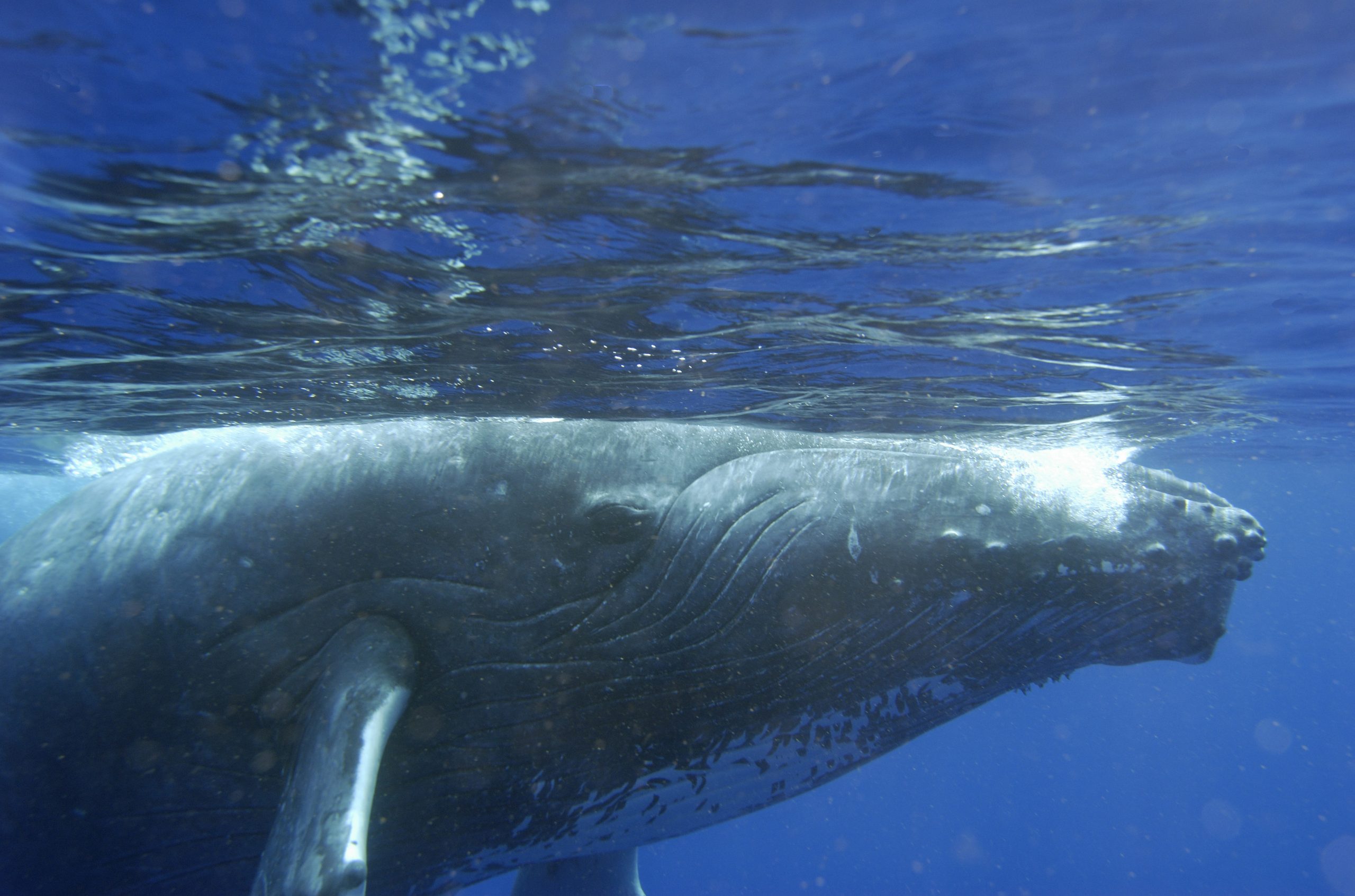Humpback Whale
Megaptera novaeangliae
Conservation Status: Endangered (IUCN)
Queensland State: Vulnerable
Australian Government: Vulnerable, Migratory – BONN
Species and status overview
The marine environment of Mackay, Whitsunday, and Isaac is an important breeding and calving ground for Humpback Whales. Whales migrate from Antarctica to warm waters in winter and give birth to their calves near islands.
Humpback Whales were once heavily exploited through commercial whaling. It is thought up to 95% of the population was harvested prior to its cessation. The population estimate for the Humpback Whale on the east coast of Australia was approximately 8,000 in 2006, this is still less than 40% of their estimated abundance prior to the whaling era. Although whaling was ceased in 1966, the resumption of commercial whaling remains a threat.
Whaling, which was one of Australia’s first primary industries, provided valuable meat and oil products, the latter being used to provide oil for oil lamps and soap. Whaling stations were established along the coast and the Humpback whale was hunted almost to extinction. The numbers of Humpback Whales crashed during the peak of the whaling industry especially in the 1960’s and 1970’s. The Humpback Whale has been protected in the southern hemisphere since 1963 and a worldwide moratorium on whaling was declared in 1986. All marine mammals in Australia are protected and the Humpback Whale population is making a slow recovery, however they are still considered vulnerable.
Description
The Humpback Whale is a large baleen whale that migrates annually along the east and west coasts of Australia. Measuring 15 – 18 metres, the whale weighs 40 tonnes and has characteristic knobbly protuberances on the head and dorsal fin. It is a recognisable whale with distinctive markings on their undersides and a characteristic black and white pattern. They have very large flippers that can vary from all white to all black.
Humpback Whales migrate from summer feeding grounds to their sub-tropical winter breeding grounds, an annual migration of up to 10,000 km that takes several months to complete. The whales are found in the Mackay, Whitsunday and Isaac region from July to September as they move north, and again when they return south.
The Humpback Whale primarily feeds in summer in Antarctic waters (January-February) with fish and krill forming the major part of their diet. Humpback Whales often forage alone and use a variety of feeding methods such as ‘lunge feeding’ and ‘bubble feeding’. These both require taking in large volumes of water at the surface and then filter feeding the krill through the whales’ baleen plates.
An adult Humpback Whale can eat up to 1500 kg of food a day. Humpback Whales can sing for a period which may last from just minutes to hours, and the song can vary over a range of frequencies with more powerful parts of the song audible over several kilometres underwater.
Conservation concerns
With a low reproductive rate (on average one offspring every two years), population recovery for Humpback Whales is lengthy so the potential resurgence of commercial whaling remains a threat.
Other threats to Humpback Whales include degradation of seasonally important habitat by humans including:
- Acoustic pollution, shipping noise
- Entanglement, for example in marine debris or fishing equipment
- Physical injury and death from ship strike
- Built structures that impact upon habitat availability and/or use, such as marinas, mining or drilling infrastructure
- Changing water quality and pollution, for example runoff from land based sources
- Swimming, snorkelling or diving with whales places both people and animals at risk, with recreational and tourism activities having the potential to affect the behaviour of cetaceans
- Changes to water flow regimes causing extensive sedimentation, or erosion, or altered currents in near shore habitat, for example dredging.
- Climate change is also a major conservation concern, with potential impacts on habitat and food availability as a result of changing ocean currents and temperatures rendering some habitats unsuitable.
What can I do?
- Support the protection of the marine environment as a safe and healthy habitat for Humpback Whales
- Avoid noise pollution and be cautious when undertaking recreational activities during the migration
- Recover fishing equipment including nets and buoys
